Learn about conversation
The Cooperative Principle
According to the Cooperative Principle, efficient communication relies on the assumption that there's an undercurrent of cooperation between conversational participants.
The Cooperative Principle can be understood in terms of four rules, called Grice's Maxims.
| We instinctively cooperate in terms of... | Maxim (or rule) |
|---|---|
| ...the truth of what we say | Maxim of Quality |
| ...the quantity of information that we provide | Maxim of Quantity |
| ...the relevance of what we contribute | Maxim of Relevance |
| ...the way we strive to communicate clearly, without obscurity or ambiguity | Maxim of Manner |
Expect users to be informative.
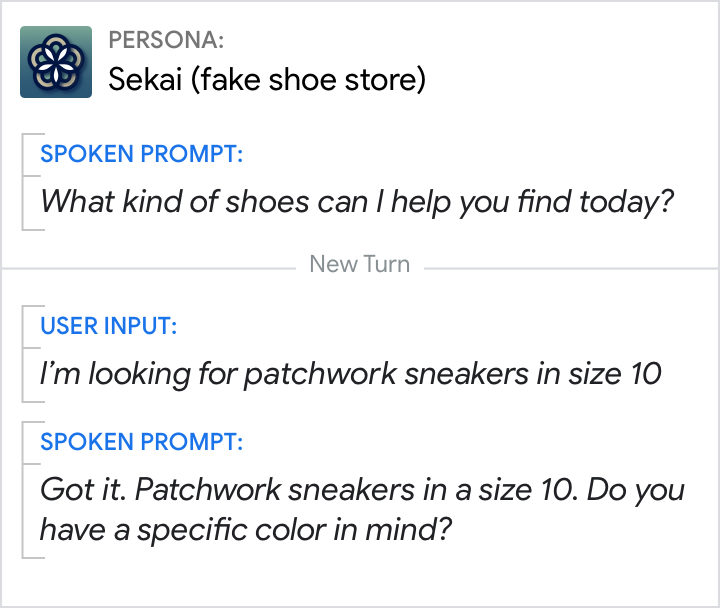
Do.
Not only did this user answer the question about shoe-type, they also specified the size, in an attempt to find what they want quickly. Expect this kind of behavior from repeat users who know what other questions will be asked.
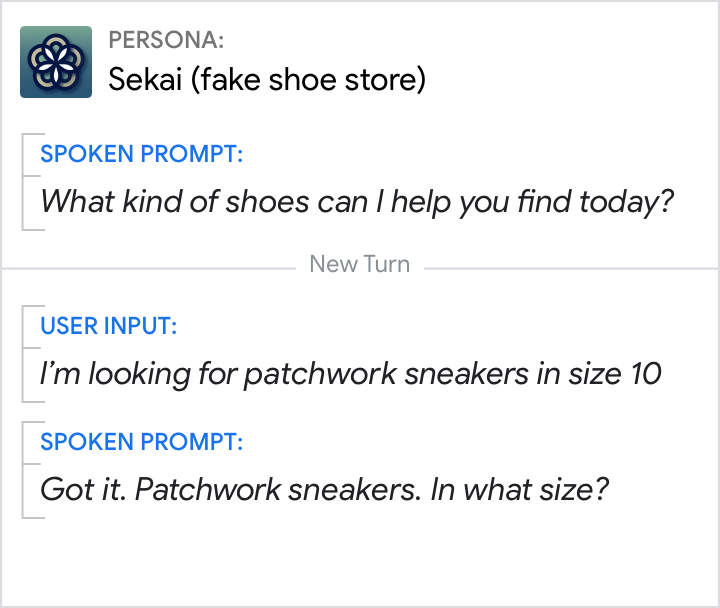
Don't.
Here, the persona was only expecting the answer to the question about shoe-type. Cooperative users will be frustrated by having to repeat the shoe size again.
Get the dialog back on track.
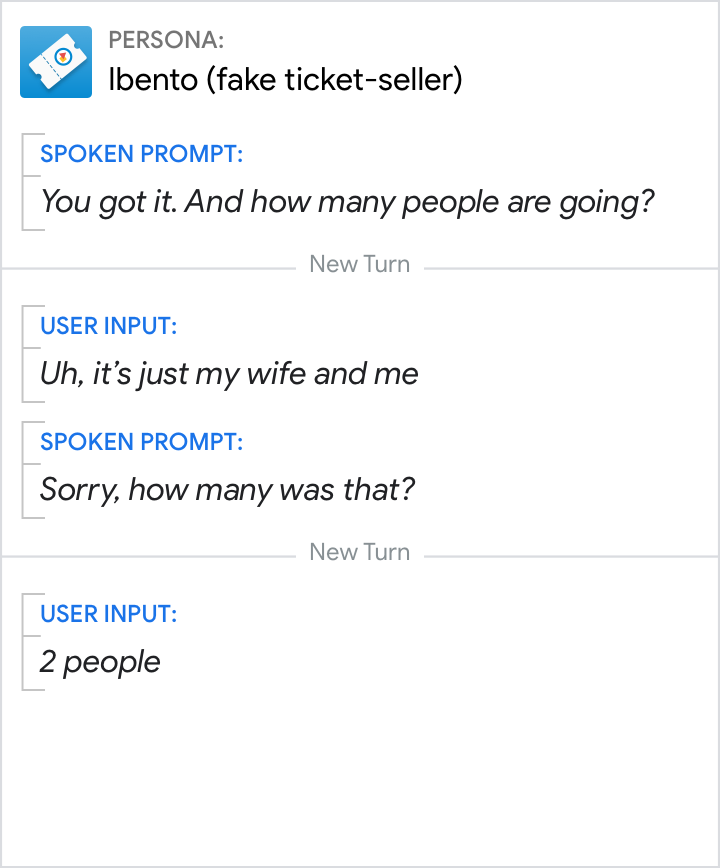
Do.
If your persona is expecting a numerical answer, then cooperative/informative responses like these won't be understood. So handle this No Match error with a rapid reprompt.
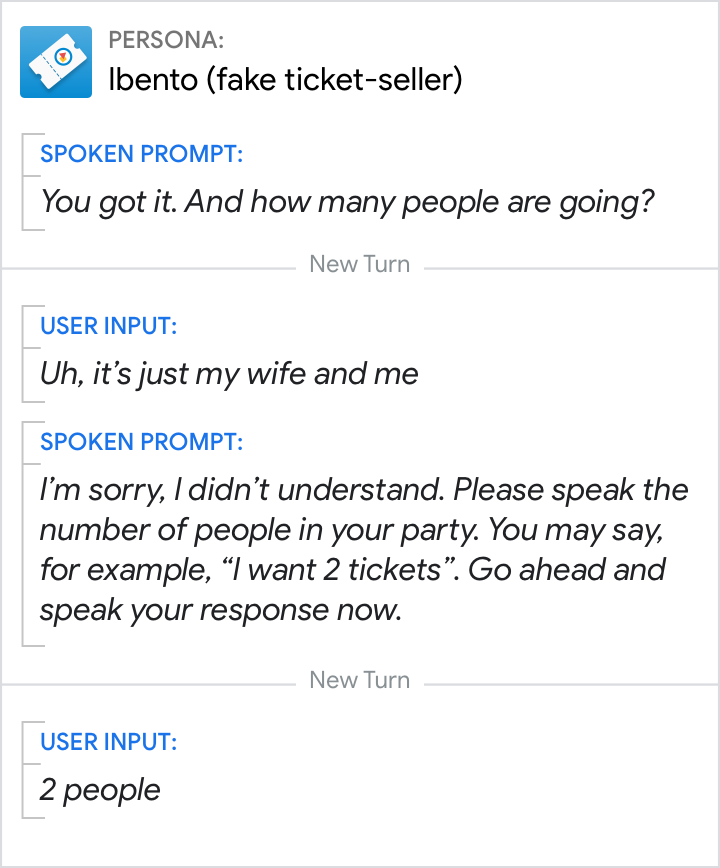
Don't.
Avoid responding with long reprompts when possible. In this case, the shorter reprompt will serve the same purpose, without making the user wait as long.
Move the conversation forward.
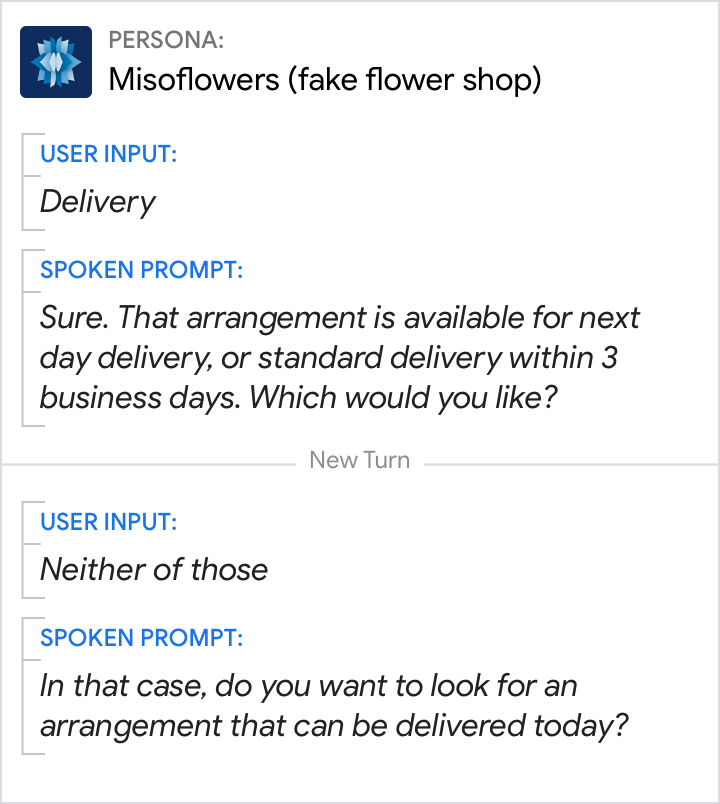
Do.
This persona makes an effort to find alternative delivery options that will satisfy the user's intent—a cooperative gesture to move the conversation forward.
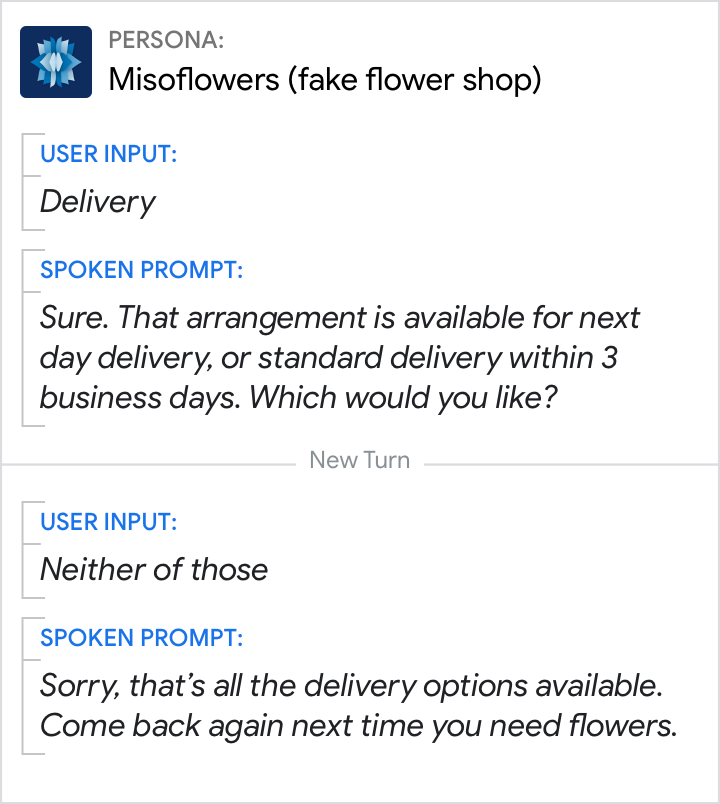
Don't.
This persona makes no attempt to satisfy the user's intent and, after presenting some bad news, simply ends the interaction.
Optimize for relevance.
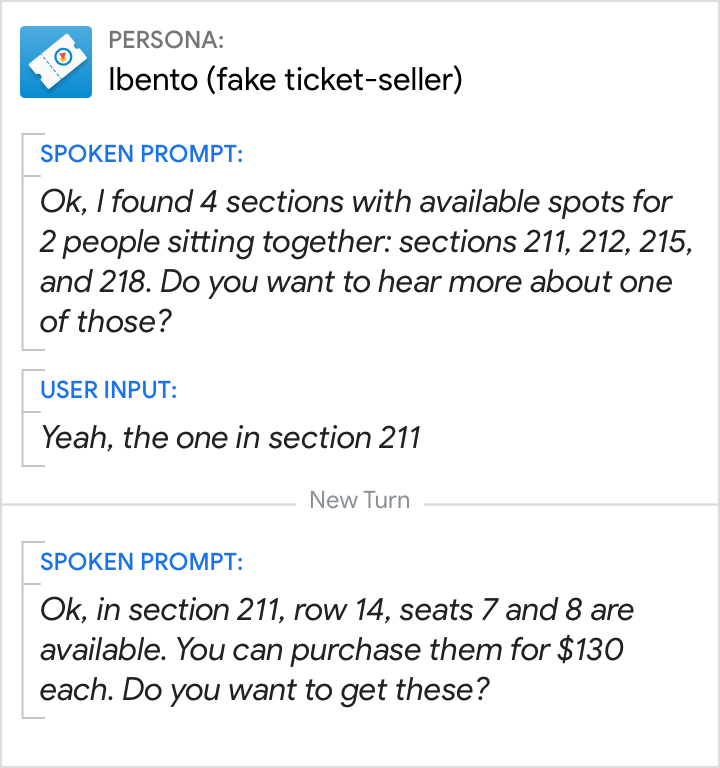
Do.
This design is optimized for relevance. The persona doesn't include details that aren't relevant to the current decision.
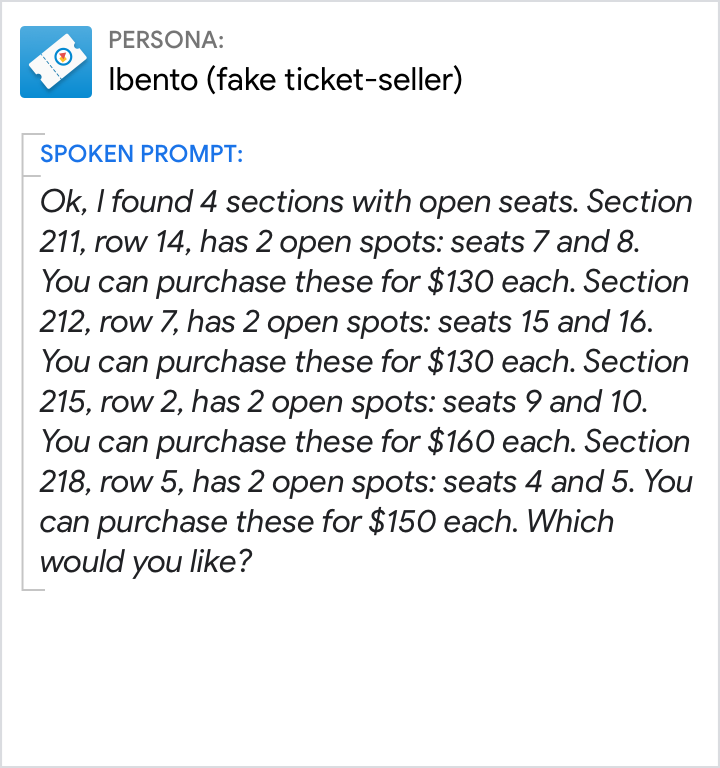
Don't.
From the user's point of view, most of this information is irrelevant and repetitive. All this detail imposes a heavy burden on the user's short-term memory as they patiently await their turn.
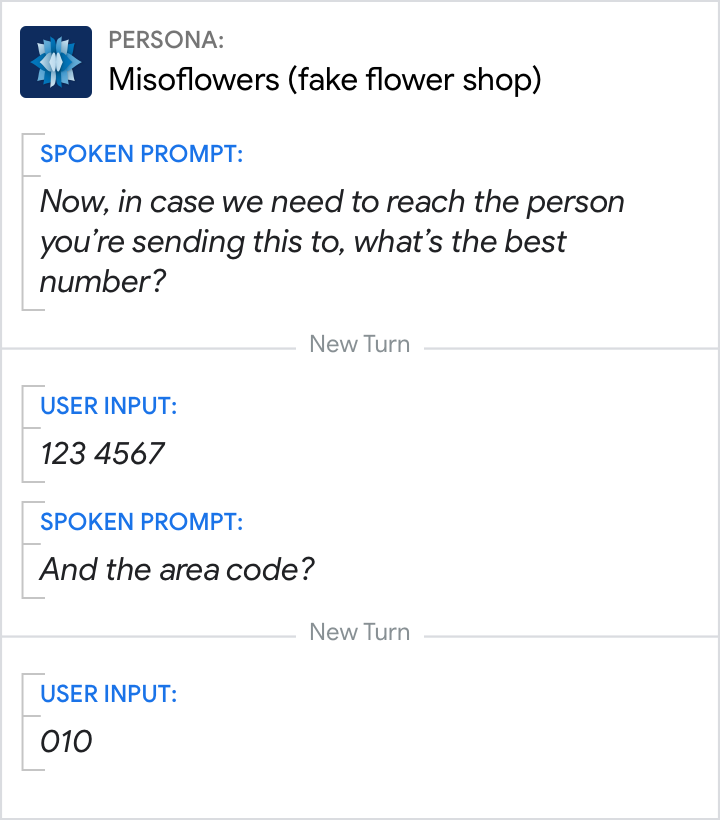
Do.
This design is optimized for relevance. Only the very few users who don't say the area code will be asked for it explicitly.
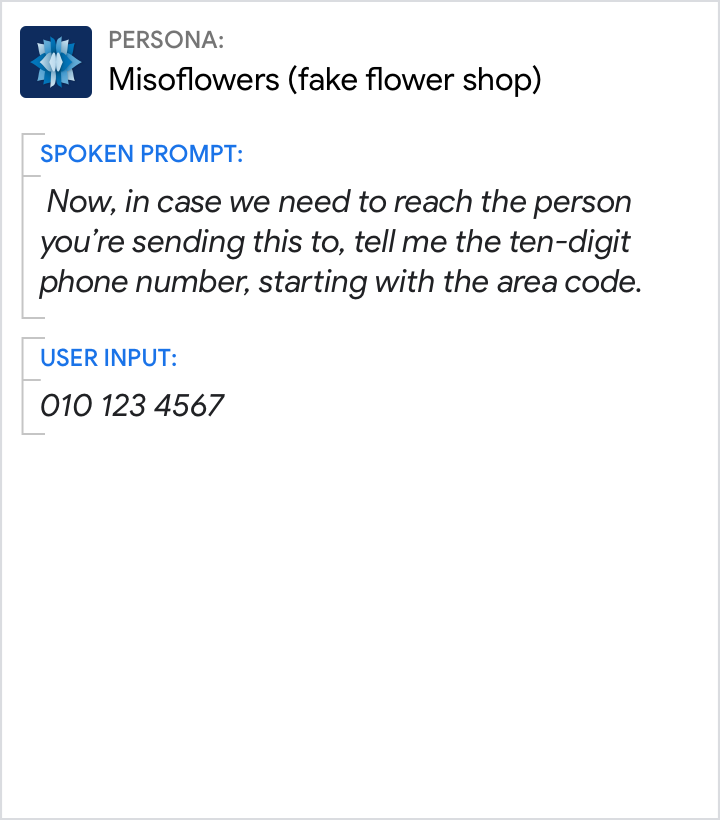
Don't.
This design forces every user to listen to instructions on how to say a phone number in a way that's easiest for the persona, but not for the user. It also incorrectly presumes that the user would be unable to do this without instruction, making it feel like an error prompt.
Listen between the lines.
Knowing what someone said is not the same as knowing what they meant. People often suggest things rather than state them explicitly. Our ability to "listen between the lines" is known as "conversational implicature."
Implicature vs implication. By conversational implicature, "Last night I saw John at a restaurant with a woman" suggests that John was with a woman other than his wife, because if the woman had been his wife, the speaker would have said so. However, by logical implication, the woman could have been John's wife, since all wives are women.
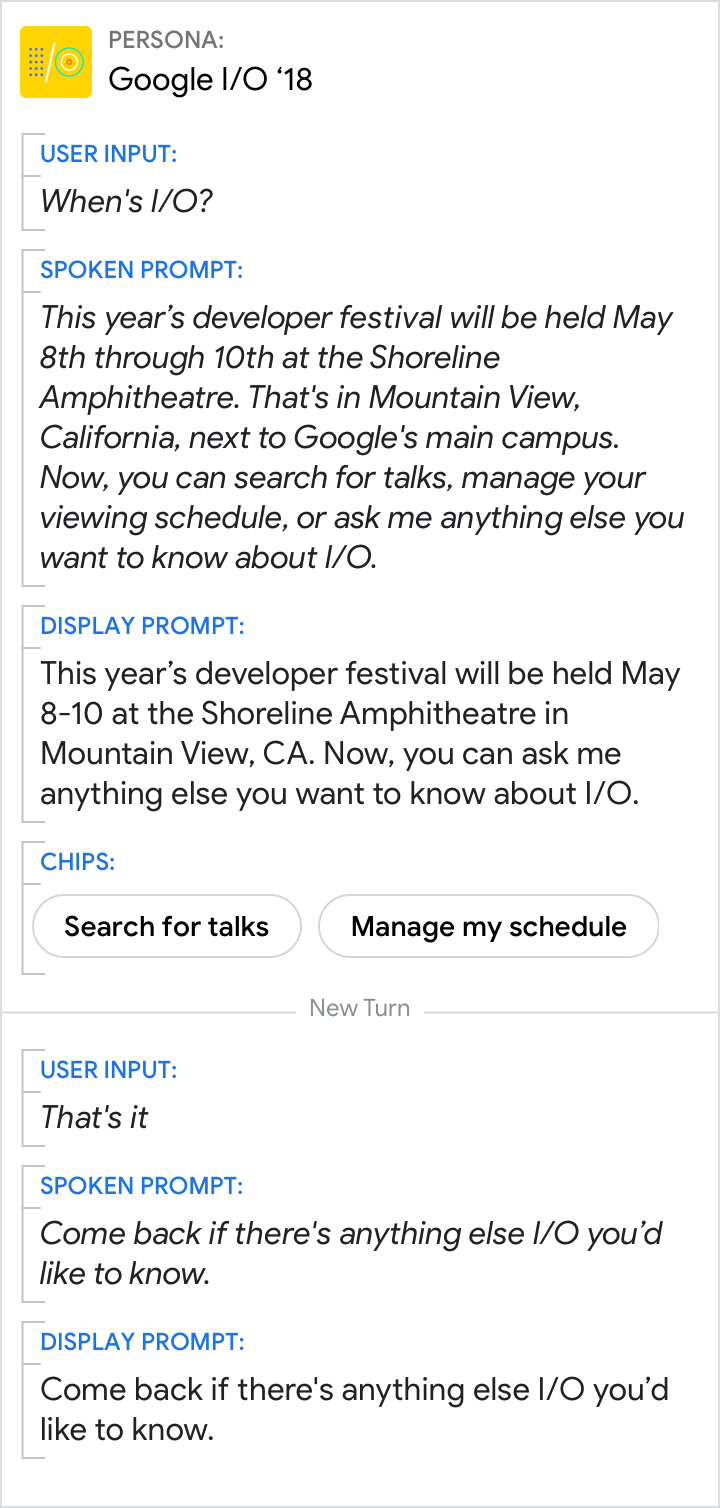
Do.
Be sure to add handling for phrases like "That's it", "That's all," "Thanks," or "I'm done," for which the implied meaning is usually "I've gotten everything I need out of this conversation and am done talking. Goodbye."
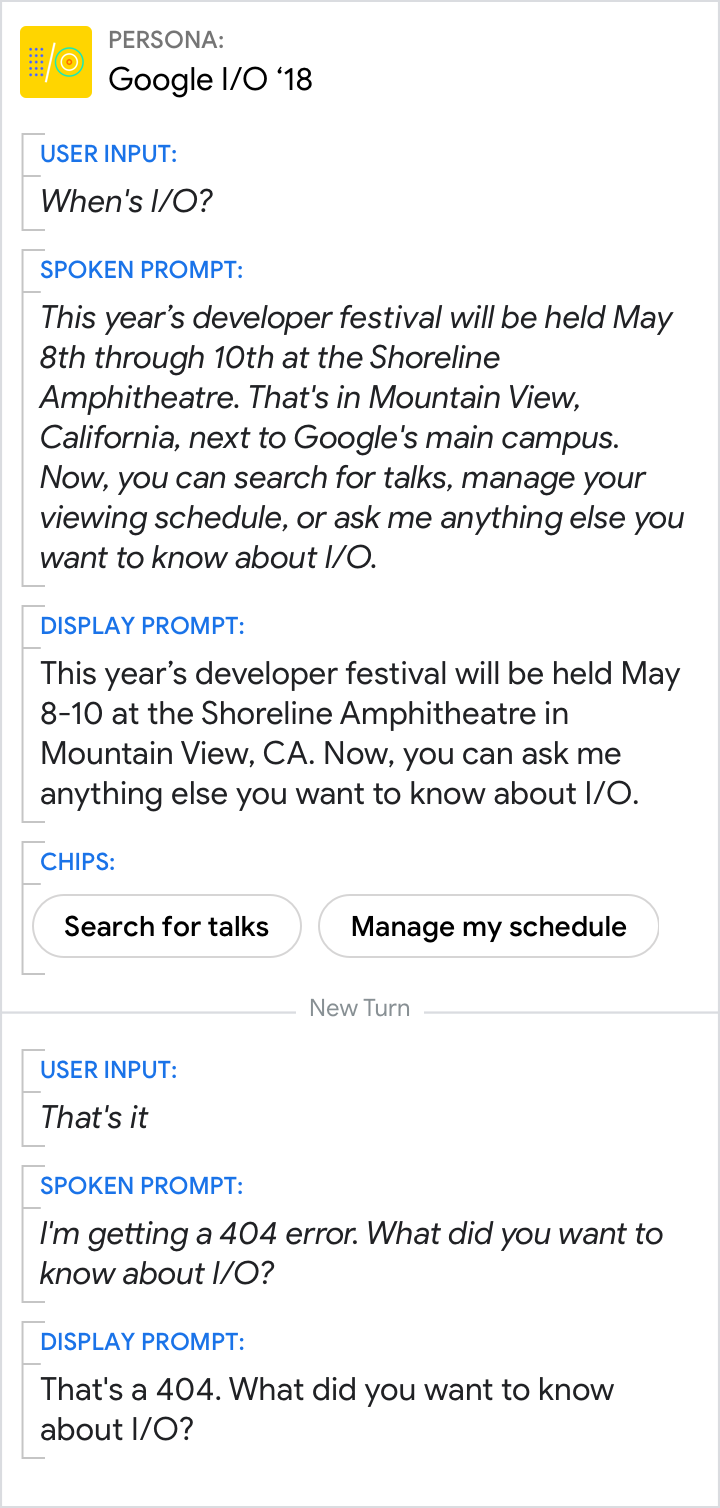
Don't.
Here, "That's it" was not added to the grammar, so it triggers a No Match error.
Speak clearly, in plain English.
People naturally avoid ambiguity and obscurity of expression in a conversation. Using words and phrases that are familiar help reduce cognitive load. When it comes to word choice, if you wouldn't say it, neither should your persona.
When you can't decide between a few similar terms, use Google Trends to find out which term people search for most and Google Books Ngram Viewer to find out which is more commonly published.
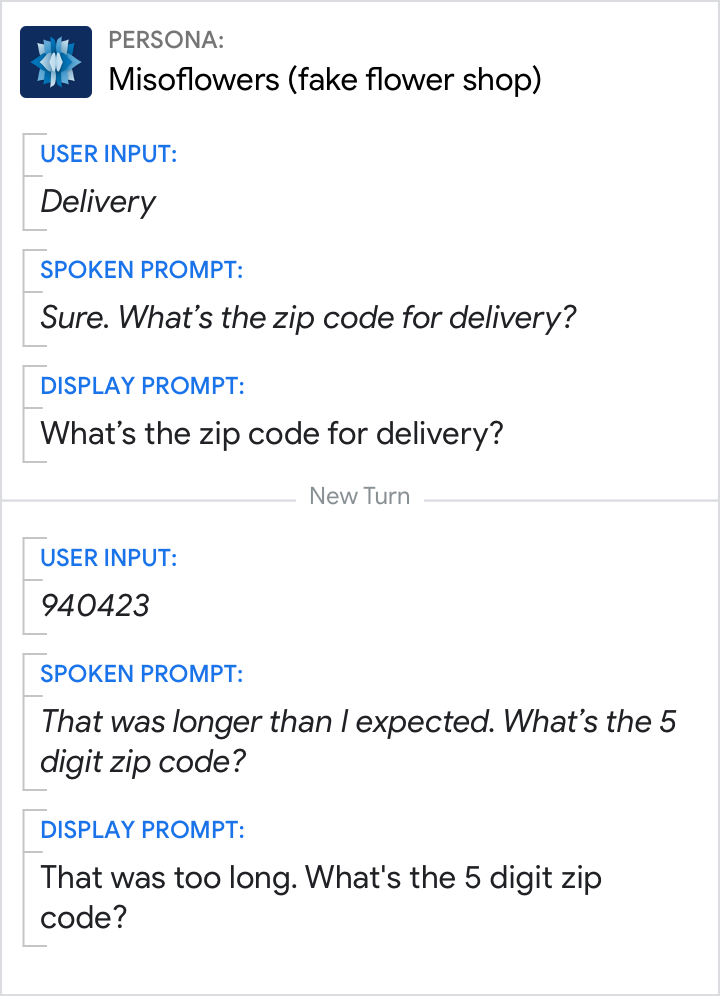
Do.
The user may have made a typo or quickly corrected themselves when speaking. So, the persona explains the issue, in plain English, and asks again.
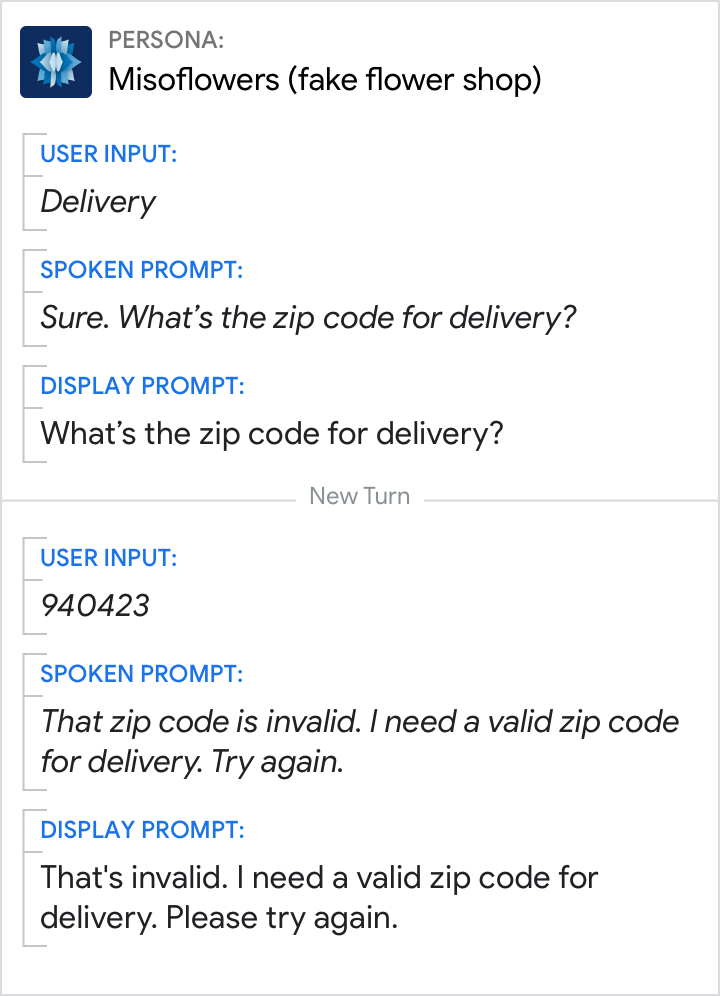
Don't.
"Invalid" is overly technical and doesn't help get the user back on track.

Do.
Keep confirmations simple. "Done!" is also a good option.
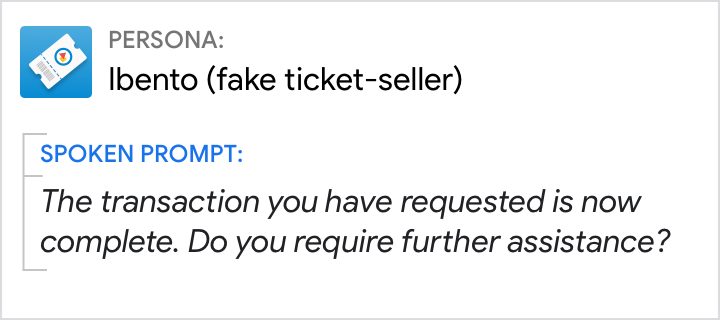
Don't.
"Transaction," "requested," and "complete" are formal, not conversational. Also, this message fails to be relevant: There is no value in reminding the user that they've just requested a transaction.
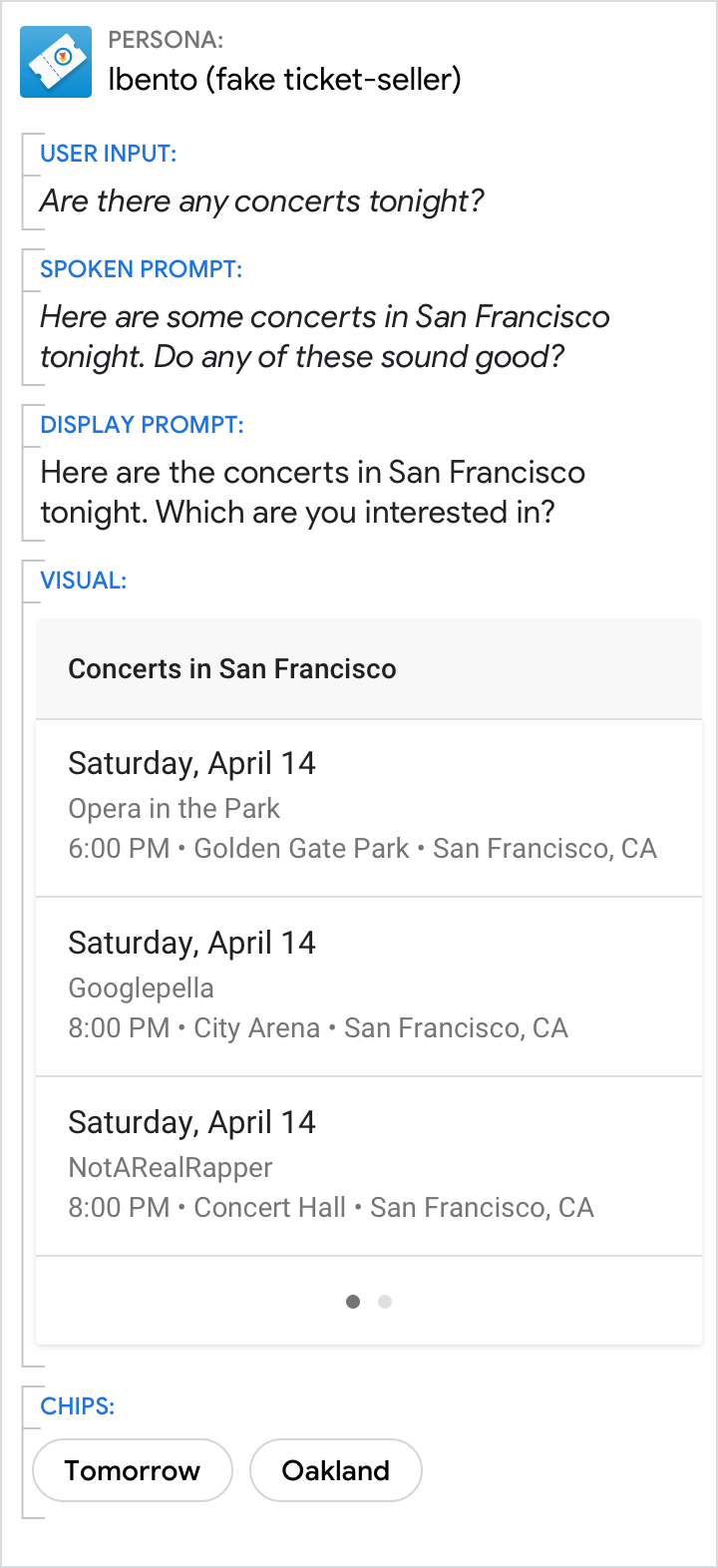
Do.
Confirm that the user's request was understood, and point to the results.
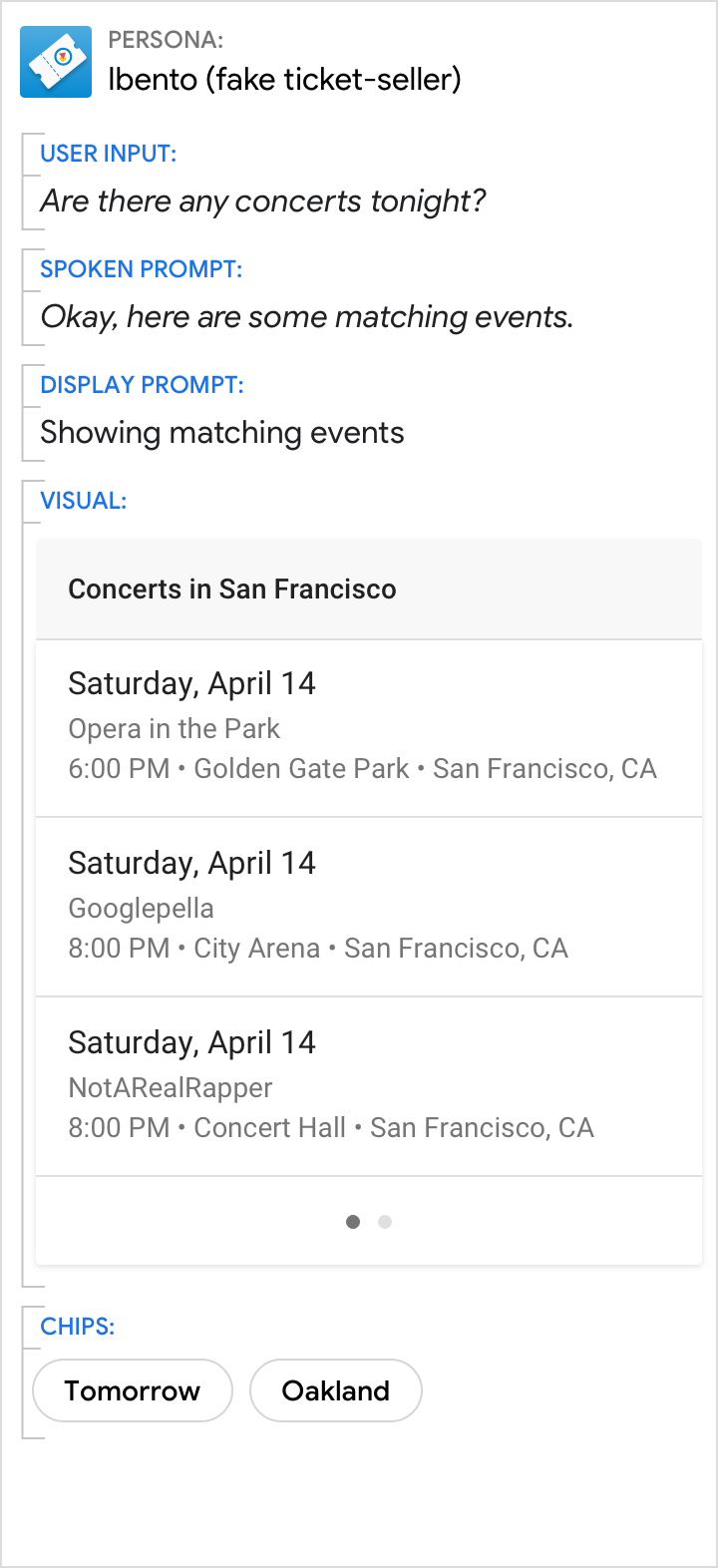
Don't.
"Matching events" is a technical expression. The "match" is the correlation between what the user said and the concerts available. Everyday users don't know, let alone care about, the challenge of matching queries to results. In addition, "matching events" is ambiguous—it can also mean events that match each other, like "matching socks."
Context
Advances in automatic speech recognition (ASR) means that we almost always know exactly what users said. However, determining what users meant is still a challenge.
Utterances often can't be understood in isolation; they can only be understood in context.
Pronouns or generic references
Your persona needs to keep track of context in order to understand the user's utterances.
If you're using Dialogflow, go here to read more about adding context.

Do.
Knowledge of the previous turn is required to know that "he" refers to NotARealDJ. And knowledge of the user's geographical location is required to know that "the city" refers to "San Francisco."

Don't.
Here, the user's question isn't understood, and a No Match error occurs.
Follow-up intents
Your persona needs to keep track of context in order to understand follow-up intents.
Unless the user changes the subject, we can assume that the thread of conversation continues. Therefore, it's likely that ambiguities in the current utterance can be resolved by referring to previous utterances.
If you're using Dialogflow, read the section on follow-up intents for details.

Do.
Using follow-up intents, the persona is able to understand that "What about a half dozen?" is a follow-on to the user's previous utterance, and interpret it as "How much does a bouquet of 6 roses cost?"

Don't.
If your Action fails to interpret utterances in their larger conversational context, it will either misinterpret the user's query or wind up in an error—in this case, a No Match error.
References to what's on the screen

Do.
Do anticipate references to where an item is located on the screen, e.g., "the first one", or what it looks like, e.g., "the red one."

Don't.
It's problematic when your persona doesn't appear to have any awareness of what is showing on the screen.
Variation
Variety is the spice of life. Users pay more attention when there's more of it. Variety can also keep the interaction from feeling monotonous or robotic.
So randomize. For any given prompt, there are usually a few conversational alternatives that'll work. Focus your efforts on prompts that users hear frequently, so these phrases don't become tiresome.
If you're using Dialogflow, you'll be able to easily add multiple response variations.
Consider all the different ways to answer the question "what time is it?"
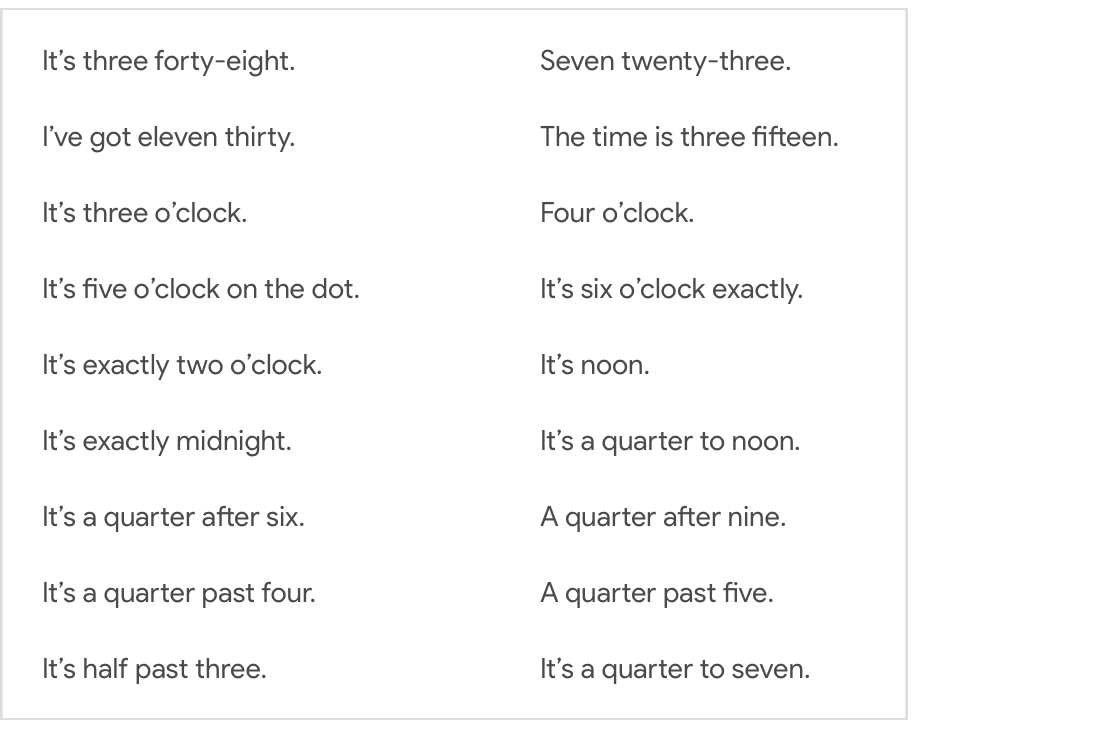
If your Action told users the time, you'd want to add all of the above variations and randomize playing them to users in the conditions in which they apply.
Turn-taking
Ask questions
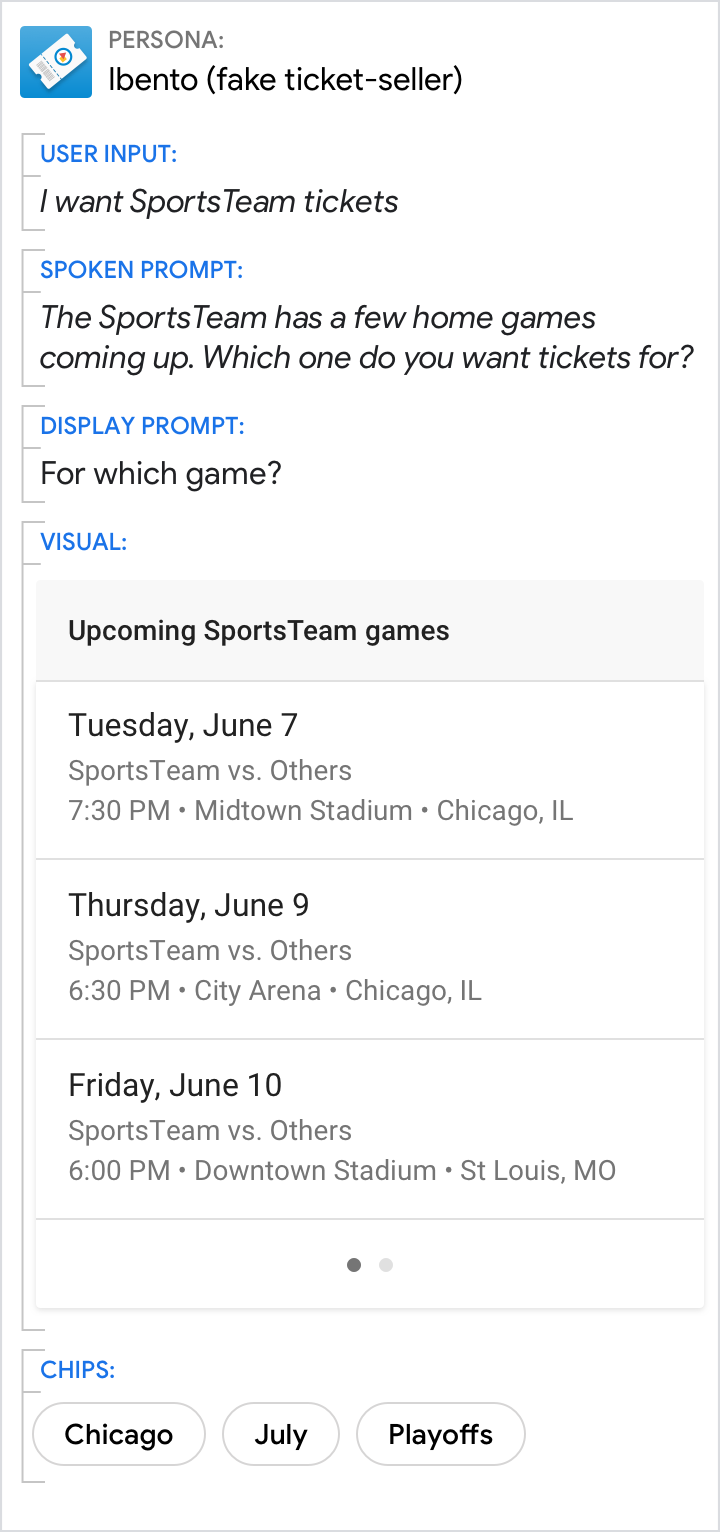
Do.
Make the call to action clear by asking a question.
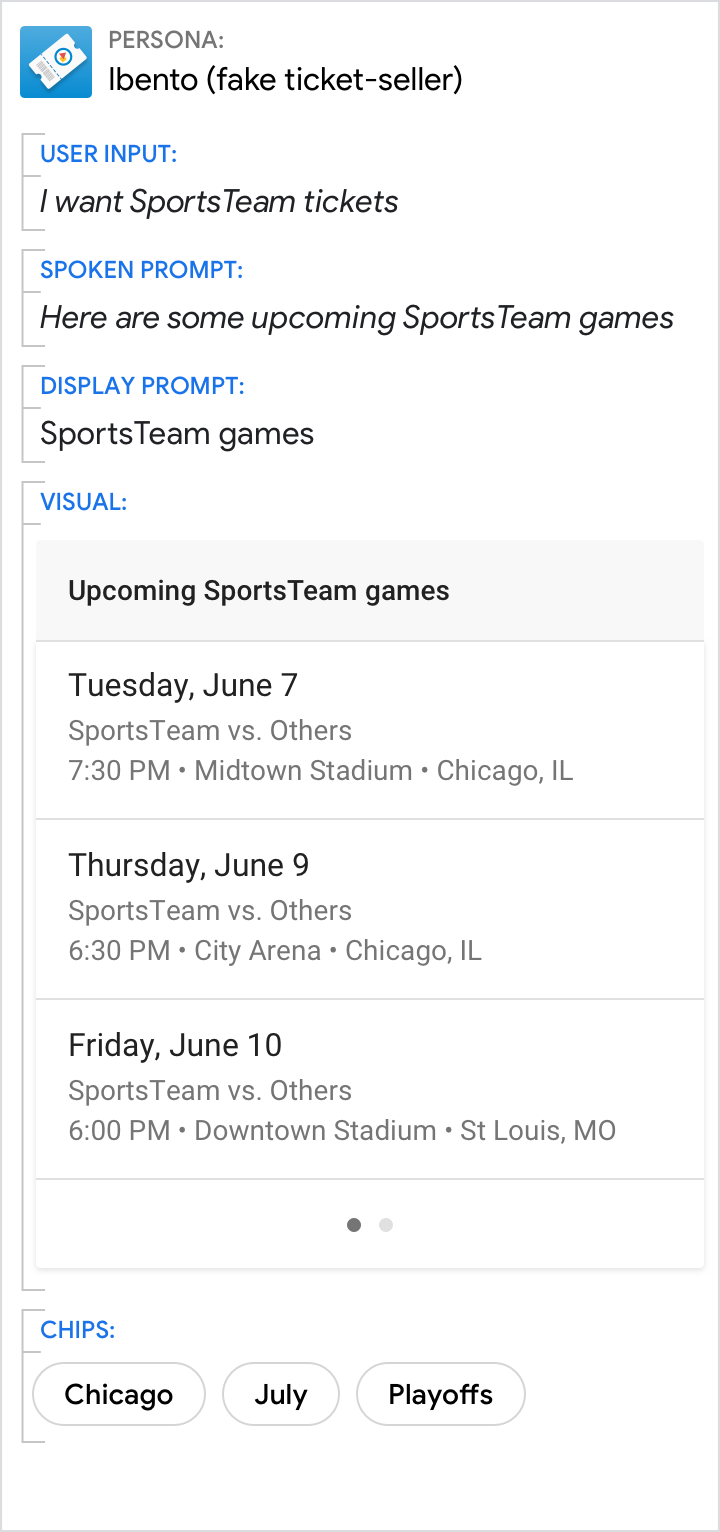
Don't.
When presented with this design, many users will not take their turn.
Don't monopolize
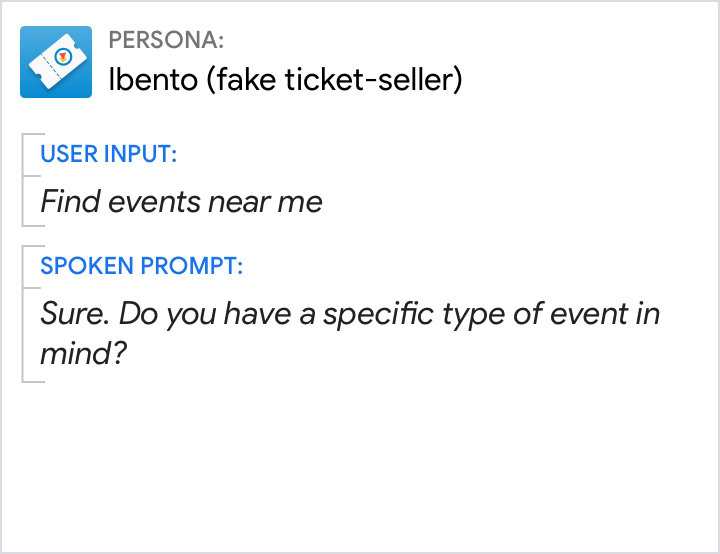
Do.
Prompt the user with only a single question at a time.
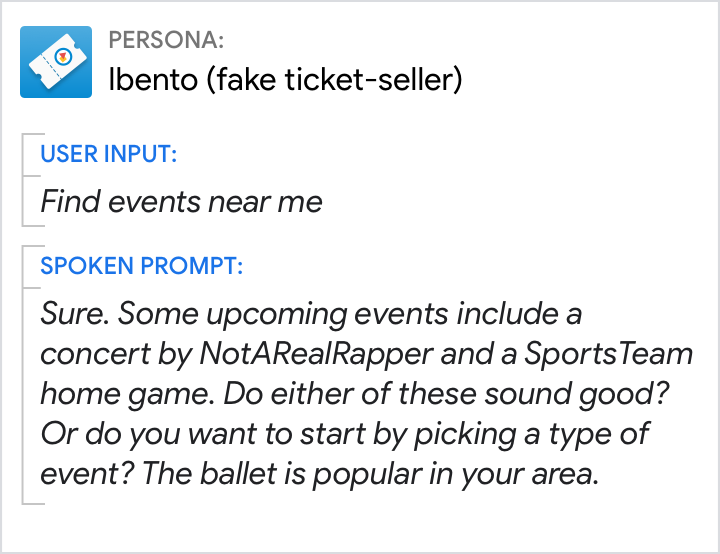
Don't.
Don't keep speaking after asking a question. Don't overwhelm the user with options and questions.
Additional resources
- Give your VUI a personality
- Move the conversation forward
- Be brief, be relevant
- Leverage context
- Direct the user's focus through word order and stress
- Don't teach "commands"—speaking is intuitive
A few highlights:
- On the magic of language, 3:13
- "I've been fascinated by language all my life. I think it's magical. It's like telepathy—that simply by the vibration of a sound wave, I can put an idea in your head."
- On making computers sound human, 2:37
- "How language is used in the social context is really important in creating something that sounds natural. Because we want the computers to talk like people. We don't want to force the people to talk like computers."
